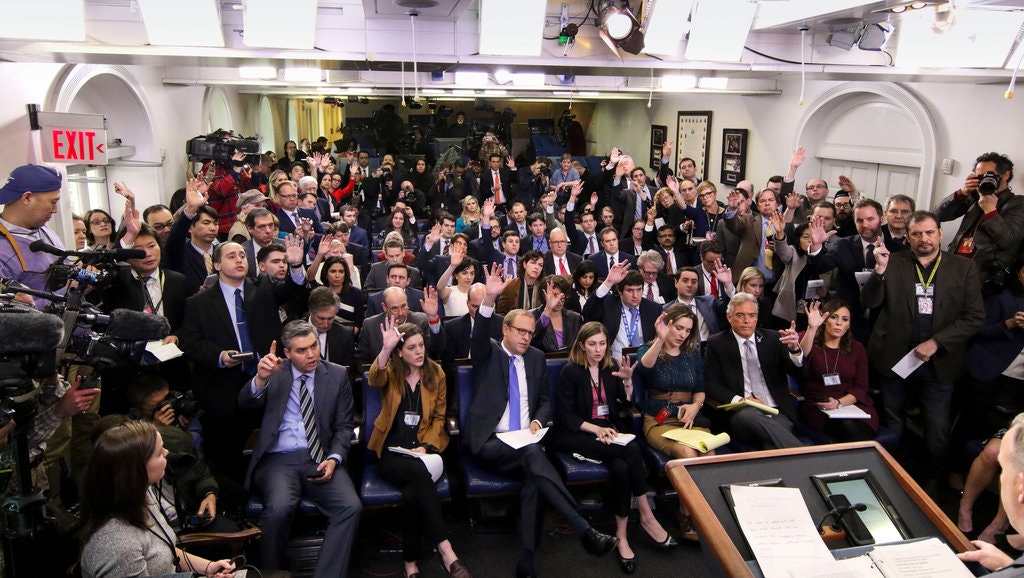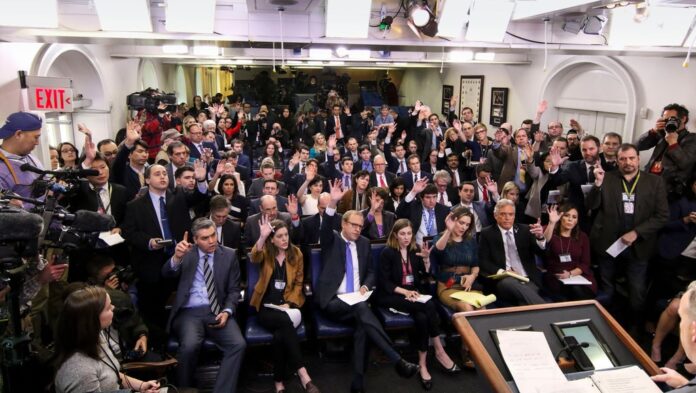Nicholas Fleisher is Associate Professor in Linguistics at UW-Milwaukee and the President of the Wisconsin conference of the American Association of University Professors.

“We’re going to have to see what happens.” That was Donald Trump’s characteristically blank response, at a Sept. 23 White House press conference, to a reporter’s question about whether he would commit to a peaceful transfer of power should he lose his bid for reelection six weeks later.
The line is one of Trump’s stock phrases, almost a verbal tic. In place of an answer, it offers free-floating procrastinatory speculation. Most importantly here, it reveals its utterer as reflexively non-committal, an attitude that meshes poorly with what is perhaps the most basic democratic commitment expected of any political office holder.
The national reaction was full of alarm, with the U.S. Senate going so far as to pass a unanimous resolution affirming its commitment to a peaceful transition. This was partly due to the fact that Trump, in response to a follow-up question, railed against absentee balloting in particularly stark terms—“Get rid of the ballots”—in an attempt to preemptively smear as fraud any result that might go against him. But Trump had by that point spent weeks lying about mail-in voting. Why did his remarks that day provoke such an outsize reaction?
To understand that, we need to think about questions and answers: their political function, their linguistic basis, and the ways they interact. The setting for Trump’s remarks was a press conference, an event with both practical and symbolic importance. Even if they are far from the ideal of an adversarial press holding power to account, press conferences remain occasions where political leaders offer glimpses of their thinking that might otherwise remain hidden from public view. Questions, in this setting, function both as a formal exercise of democratic accountability and as a tool for extracting politically revelatory information.
Against this backdrop, Trump’s failure to commit to a peaceful transition was received as a dark secret brought to light (the fact that he had made similar remarks in the past notwithstanding). Linguistically, a question calls on its addressee to provide an answer that is both true and complete: in this case, an answer of yes or no. In combination with the political function of questions in a press conference, Trump’s refusal to say yes became an admission of antidemocratic obstinacy and was met with due outrage.
Less remarked upon was the potentially generative role of the question itself. Questions seek information. In most semantic theories of questions, they function to divide up the space of open possibilities in a particular way, and ask the addressee to say which of the resulting options is true. What did you have for breakfast? divides the possibility space into potential answers of the form I had __ and asks the addressee to fill in the blank truthfully and completely. Will you commit to a peaceful transfer of power? yields just two possibilities: yes or no. In each case, the question presupposes that the relevant possibilities are open, i.e. that the answer is not yet known to the conversational participants. This presumption underwrites the information-seeking function of asking a question.
In the case at hand, this linguistic precondition collides with the political stakes of the question. The peaceful transfer of power is perhaps the most fundamental norm in U.S. politics. It is not something that office holders, let alone U.S. presidents, are typically asked about. It quite literally goes without saying. To ask the question, then, is to unsettle this bedrock presumption. The linguistic presupposition that the queried possibilities are open—that the matter in question is as yet unresolved—is not preempted by the strength of our shared political norms; on the contrary. The presence of a linguistic expression whose function is to seek information causes people to behave and react as if there is in fact information to be sought.
The question in this case, then, linguistically presumed that its answer was up for grabs, just like any other question. At the same time, the content of the question was such that only one of the formally available answers (“yes”) was politically acceptable. The function of the question was thus to force the president into a normative commitment. Trump, whatever else one might say about him, is a skilled interpreter of interpersonal power relations. And to a degree rarely seen in public life, he is loath to concede any limitation on his own power. Seeing the question for what it was, his reaction was to block the questioner’s rhetorical move, to reject the call to bind himself via a coerced speech act.
In an important sense, the question itself here drove events and the ensuing public reaction. Trump had not called reporters to the White House in order to announce an antidemocratic intention of clinging to power in defiance of the law. The reporter’s act of asking the question created the opportunity for Trump’s outrageous non-answer. This kind of question—one that raises what is supposed to be a settled issue—opens up imaginative space for transgressions that weren’t expressly on the table before. With a figure like Trump, whose obsession with social dominance and whose authoritarian tendencies have long been clear, questions like this arguably contribute to the danger.
Members of the news media would do well to attend to the generative potential of their rhetorical strategies in questioning and writing about figures like Trump. This is not to say that reporters themselves are responsible for the president’s underlying sociopathy and the threat it poses. But they must appreciate that there is a feedback loop between norm erosion and the dislodging of shared assumptions via presupposition accommodation (a linguistic counterpart of norm erosion). The Washington Post seems to understand this, at least implicitly: its podcast “exploring the powers and limitations of the American presidency, and what happens when they’re tested” is named “Can He Do That?” Ask the question often enough, and people will start to wonder.





